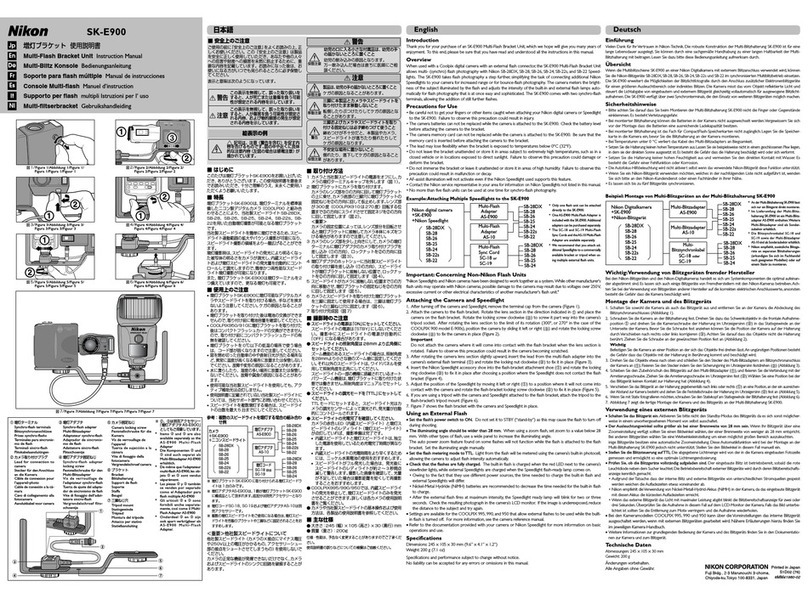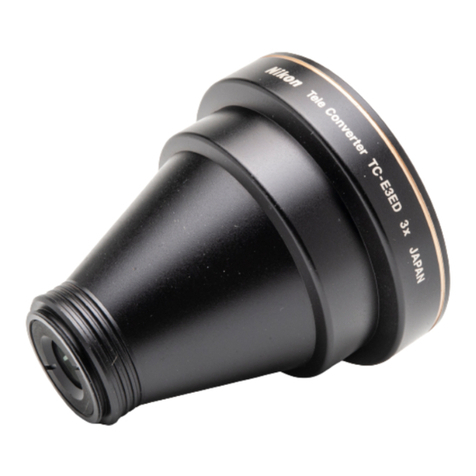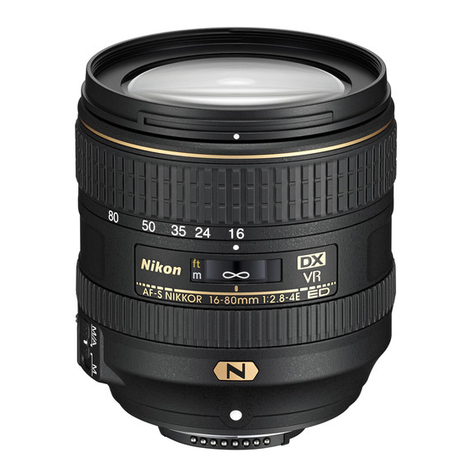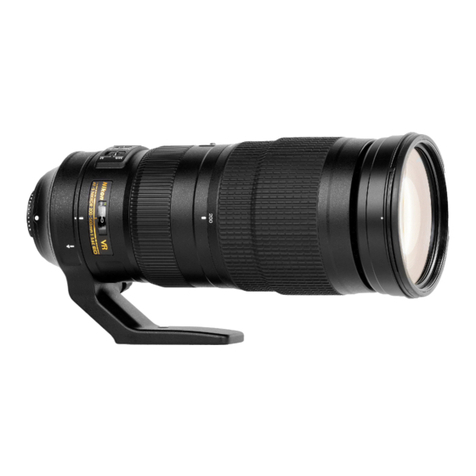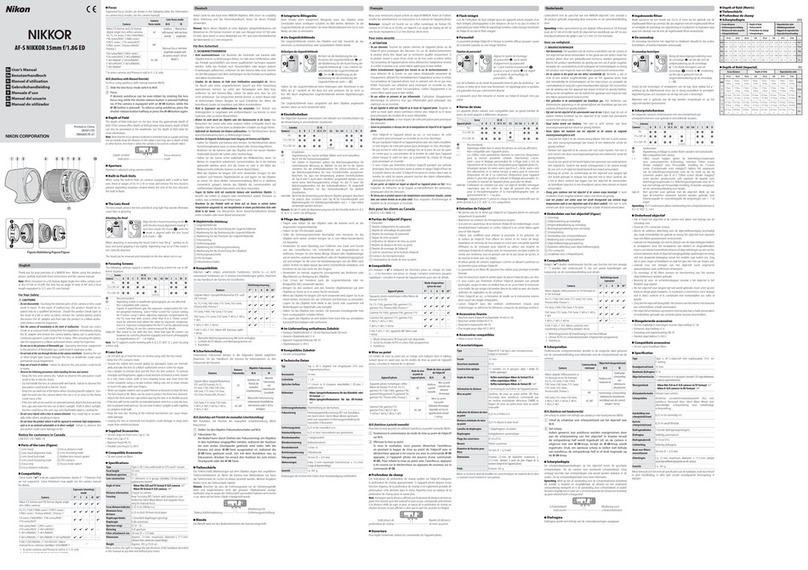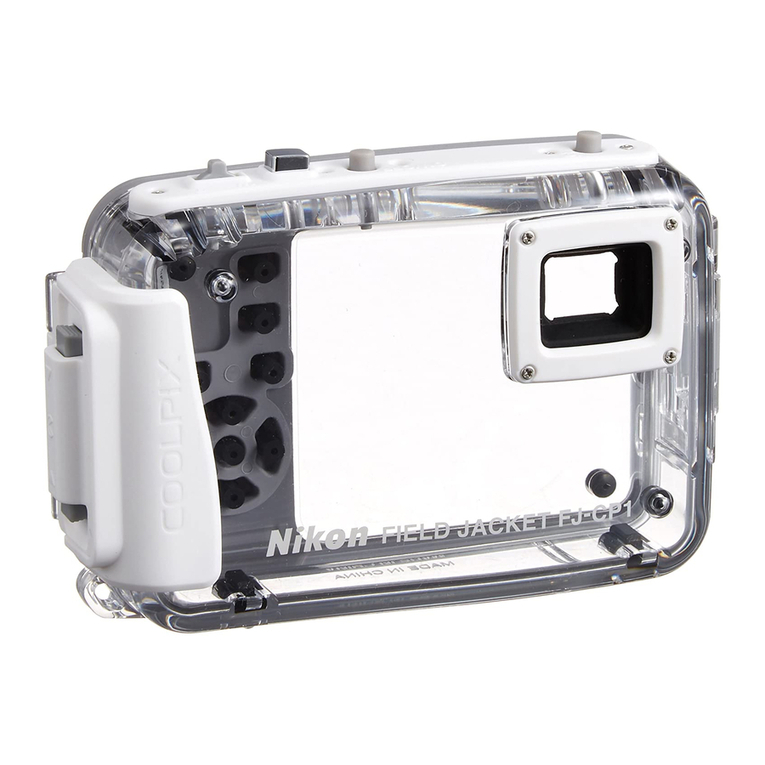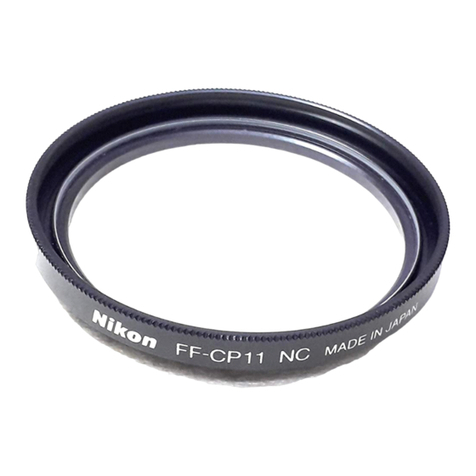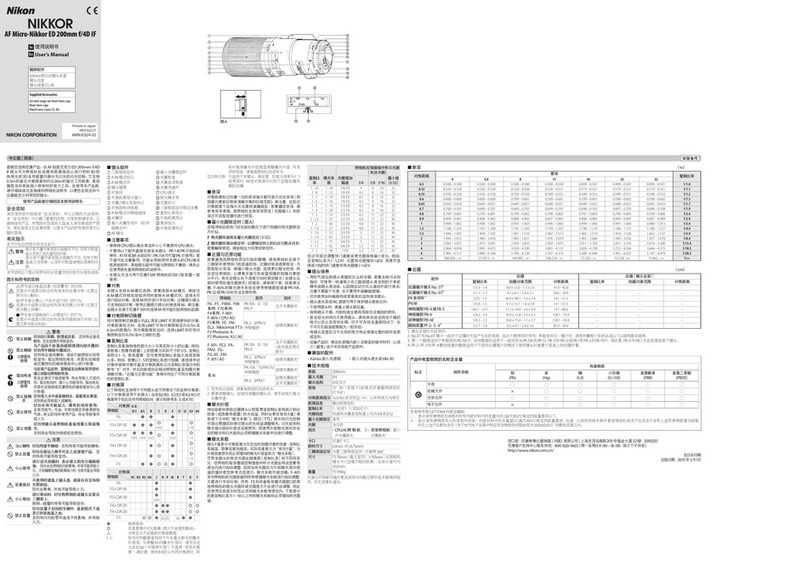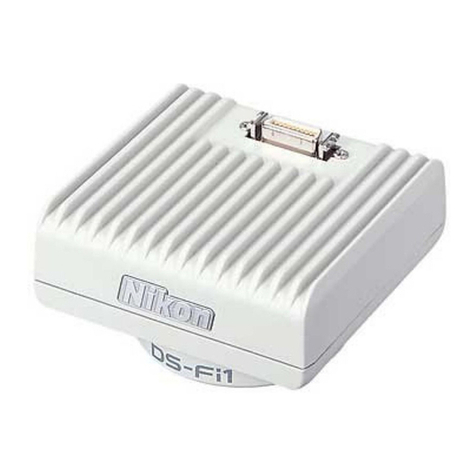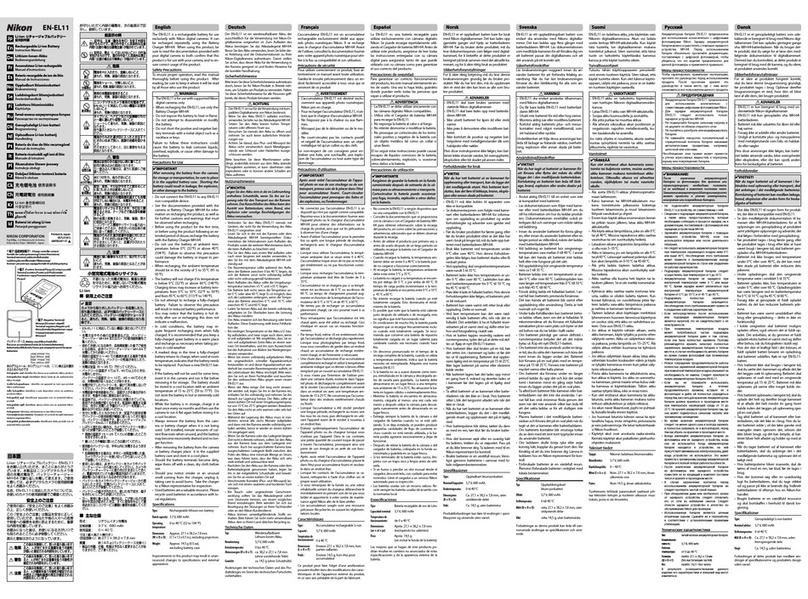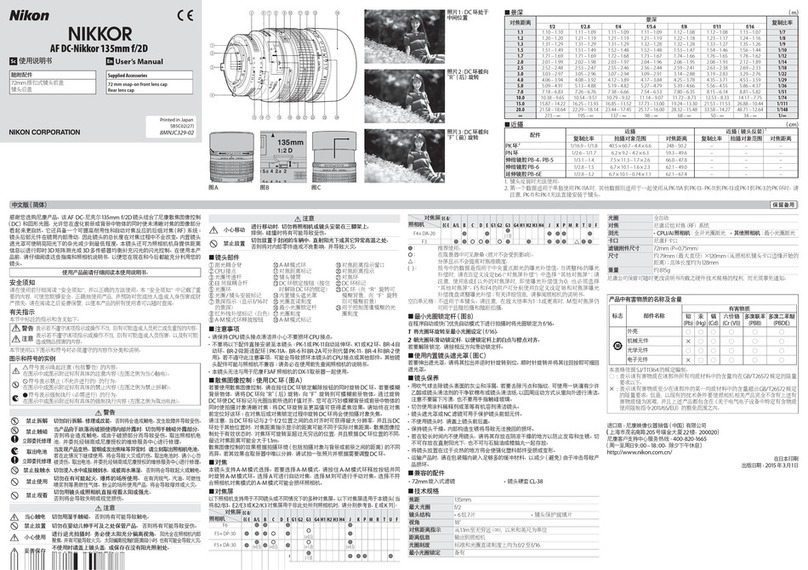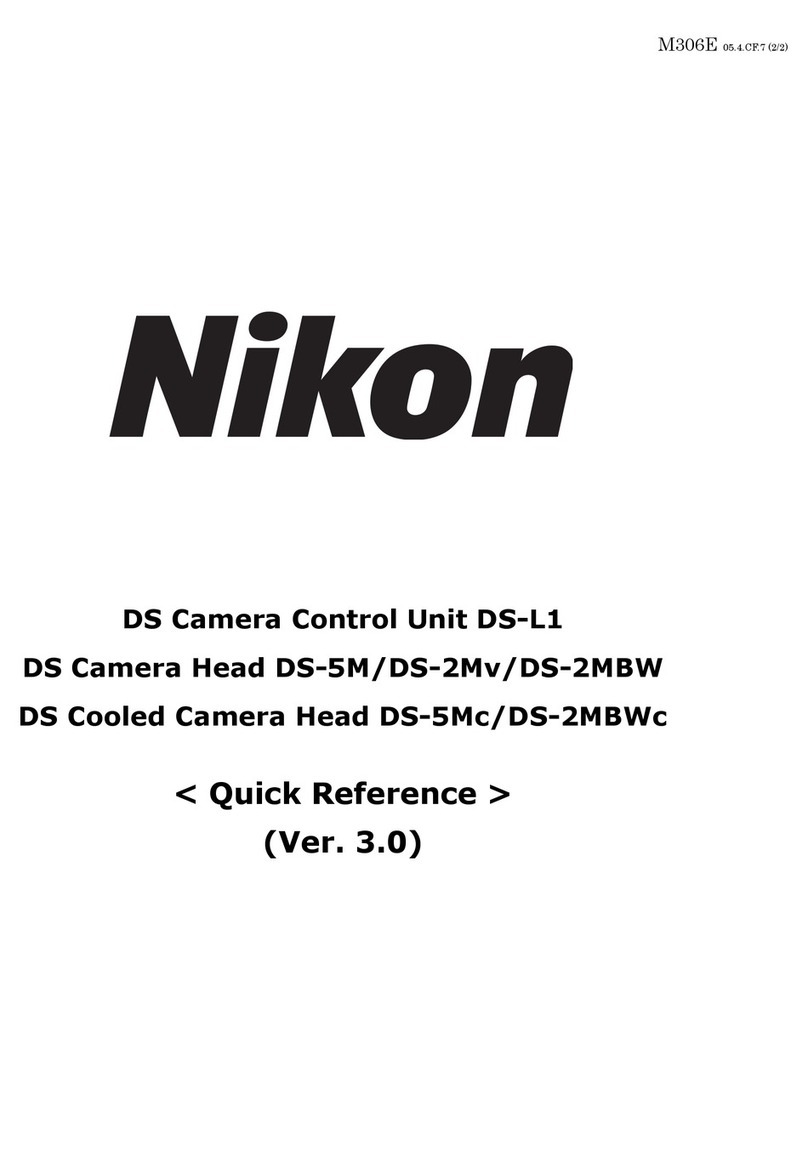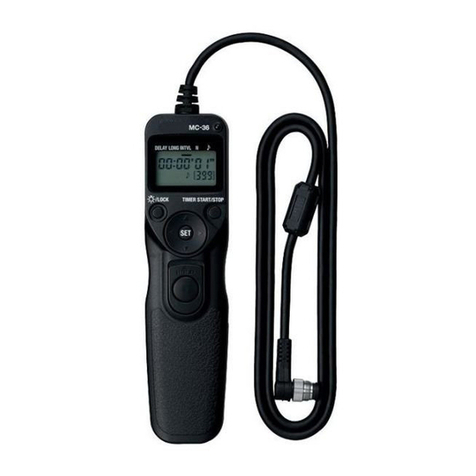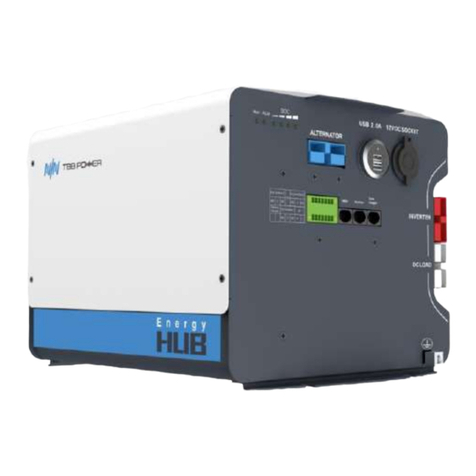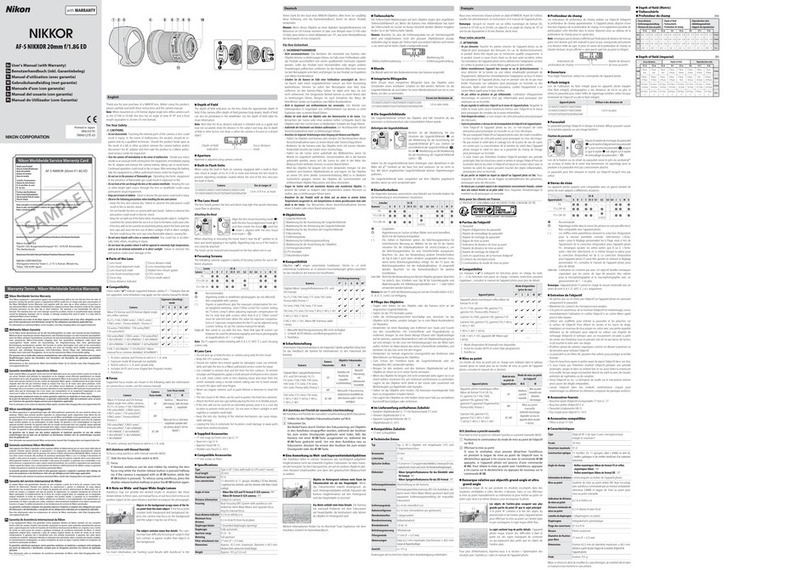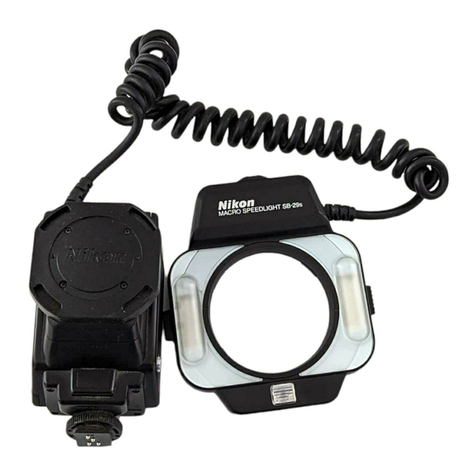
Français
Avant d’utiliser cet objectif, veuillez lire attentivement ces instructions et le
manuel de l’appareil photo.
Remarque : lorsqu’il est monté sur un reflex numérique de format DX,
comme le D7200 ou le D5500, cet objectif a un angle de champ de
61°–22°50et une focale équivalente à 36–105 mm (format 24 × 36 mm).
Pour votre sécurité
A
AVERTISSEMENTS
• Ne démontez pas ou ne modiez pas le produit. En cas de dysfonctionnement,
ce produit ne doit être réparé que par un technicien qualifié. Si ce produit
se casse suite à une chute ou à un autre accident, évitez de toucher
les parties exposées. Le non-respect de ces consignes de sécurité peut
provoquer un choc électrique ou d’autres blessures.
• En cas de dysfonctionnement, mettez immédiatement l’appareil photo hors tension.
En cas d’apparition de fumée ou d’une odeur inhabituelle provenant
du matériel, débranchez immédiatement l’adaptateur secteur et retirez
l’accumulateur de l’appareil photo, en faisant attention de ne pas vous
brûler. Continuer d’utiliser le matériel risque de provoquer un incendie ou
des blessures. Une fois l’accumulateur retiré, apportez votre matériel à un
centre Nikon agréé pour le faire contrôler.
• Gardez le produit au sec. N’exposez pas ce produit à l’eau ou ne le manipulez
pas avec les mains mouillées. Le non-respect de cette consigne de
sécurité peut provoquer un incendie ou un choc électrique.
• N’utilisez pas le matériel en présence de gaz inammables. La manipulation du
matériel dans des stations-service ou en présence de propane, d’autres gaz
inflammables ou de poussière peut provoquer une explosion ou un incendie.
• Neregardezpaslesoleilàtraversl’objectifouleviseurdel’appareilphoto.L’observation
du soleil ou de toute autre source lumineuse puissante à travers l’objectif ou
le viseur peut provoquer des troubles irrémédiables de la vision.
A
MISES EN GARDE
• Conservez hors de portée des enfants. Le non-respect de cette consigne de
sécurité peut provoquer des blessures ou le dysfonctionnement du produit.
• Ne focalisez pas les rayons du soleil à travers l’objectif. Les rayons du soleil
focalisés à travers l’objectif peuvent provoquer un incendie. Lorsque vous
photographiez des sujets à contre-jour, maintenez le soleil loin du cadre ;
si vous n’avez pas l’intention d’utiliser l’objectif avant longtemps, remettez
en place ses bouchons et rangez-le à l’abri de la lumière directe du soleil.
• Ne surchauez pas le produit. Ne laissez pas ce produit dans des lieux exposés
à des températures très élevées, comme dans une voiture fermée en plein
soleil. N’emballez pas ce produit dans une serviette, un mouchoir ou ne
le recouvrez pas de quelque manière que ce soit lorsque vous l’utilisez. Le
non-respect de ces consignes de sécurité peut provoquer un incendie ou
le dysfonctionnement du produit.
■
Parties de l’objectif
qRepère de montage du parasoleil
wBague de mise au point
eIndicateur de distance de mise
au point
r
Repère de distance de mise au point
tRepère de l’échelle des focales
yÉchelle des focales
uBague de zoom
iRepère de montage de l’objectif
oJoint en caoutchouc de la
monture d’objectif
!0Contacts du microprocesseur
!1Commutateur du mode de mise
au point
!2Commutateur de réduction de
vibration
!3Parasoleil
!4Repère de verrouillage du
parasoleil
!5Commande de déverrouillage du
parasoleil
!6Repère d’alignement du parasoleil
■
Compatibilité
Cet objectif peut être utilisé avec les appareils photo gamme D4, gamme
D3, Df, gamme D810, gamme D800, D750, D700, D610, D600, gamme D300,
D7200, D7100, D7000, D5500, D5300, D5200, D5100, D5000, D3300, D3200
et D3100. Pour obtenir les informations les plus récentes sur les appareils
photo compatibles, reportez-vous à nos dernières brochures ou consultez
le site Web Nikon de votre région.
■
Mise au point
Les modes de mise au point pris en charge sont indiqués dans le tableau
suivant (pour en savoir plus sur les modes de mise au point de l’appareil
photo, consultez le manuel de ce dernier).
Mode de mise au point
de l’appareil photo
Mode de mise au point de l’objectif
Mode de mise au point de l’objectif
M/A
M
AF Autofocus à priorité manuelle Mise au point manuelle avec
télémètre électronique
MF
Mise au point manuelle avec télémètre électronique
M/A (Autofocus à priorité manuelle)
M/A (Autofocus à priorité manuelle)
Pour faire la mise au point en utilisant l’autofocus à priorité manuelle (M/A) :
z Positionnez le commutateur du mode de mise au point de l’objectif
sur M/A.
xEffectuez la mise au point.
Si vous le souhaitez, vous pouvez désactiver l’autofocus en
pivotant labague de mise au pointde l’objectif avec ledéclencheur
appuyé à mi-course (ou avec la commande AF-ON appuyée, si
l’appareil photo est pourvu d’une commande AF-ON). Pour refaire
la mise au point avec l’autofocus, appuyez à mi-course sur le
déclencheur ou appuyez de nouveau sur la commande AF-ON.
■
Zoom et profondeur de champ
Zoom et profondeur de champ
Avant de faire la mise au point, tournez la bague de zoom pour régler la
focale et cadrer la photographie. Si l’appareil photo offre un aperçu de la
profondeur de champ (fermeture du diaphragme), il est possible d’avoir un
aperçu de la profondeur de champ dans le viseur.
Remarque: remarquez que la distance affichée par l’indicateur de distance de mise
au point n’est donnée qu’à titre indicatif et peut ne pas correspondre précisément
à la distance réelle du sujet, et peut, en raison de la profondeur de champ ou
d’autres facteurs, ne pas afficher ∞ alors que le sujet mis au point est éloigné.
■
Ouverture
Réglez l’ouverture à l’aide des commandes de l’appareil photo. La cadence
de prise de vue peut ralentir à certaines ouvertures.
■
Flash intégré
Les distances minimales de mise au point auxquelles l'objectif peut être
utilisé avec les flashes intégrés des appareils photo sans créer de vignettage
sont indiquées ci-dessous.
Appareil photo
Focale
Utiliser à des distances de
Utiliser à des distances de*
Gamme D810/gamme D800/
D750/D700/D610/D600/D5500/
D750/D700/D610/D600/D5500/
D5300/D5200/D5100/D5000/
D3300/D3200/D3100
50 mm 1,0 m ou plus
70 mm 0,6 m ou plus
Gamme D300/D7200/D7100/
D7000
35 mm 1,5 m ou plus
50 mm 0,6 m ou plus
70 mm 0,6 m ou plus
* Parasoleil non monté.
Le vignettage fait référence aux ombres créées à l'endroit où l'extrémité de
l'objectif occulte le flash intégré. Pour obtenir les dernières informations
sur le vignettage avec cet objectif, reportez-vous au manuel de l'appareil
photo.
■
Réduction de vibration (VR)
Réduction de vibration (VR)
La fonction de réduction de vibration (VR) atténue les phénomènes de flou
provoqués par le bougé de l’appareil photo, ce qui permet de recourir à des
vitesses d’obturation jusqu’à 4,0 fois plus lentes que celles normalement
utilisées et d’augmenter ainsi le nombre de vitesses possibles. Les effets de
la fonction VR sur la vitesse d’obturation sont mesurés en mode NORMAL
selon les normes de la CIPA (Camera and Imaging Products Association) ;
les mesures des objectifs de format FX sont effectuées à l’aide d’appareils
photo numériques de format FX, celles des objectifs de format DX à l’aide
d’appareils photo de format DX. Les mesures des zooms sont effectuées en
position de zoom maximale.
Utilisation du commutateur de réduction de vibration
Utilisation du commutateur de réduction de vibration
ACTIVE
• Sélectionnez OFF pour désactiver la réduction de vibration.
• Sélectionnez NORMAL pour optimiser la réduction
de vibration lorsque vous photographiez des sujets
immobiles. La réduction de vibration s’active lorsque vous
appuyez sur le déclencheur à mi-course.
• Sélectionnez ACTIVE pour réduire les effets des vibrations
lorsque vous photographiez depuis un véhicule en
mouvement et dans d’autres situations où le mouvement
de l’appareil photo est important. La réduction de vibration
s’active lorsque vous appuyez sur le déclencheur à mi-course.
Utiliser la réduction de vibration : Remarques
Utiliser la réduction de vibration : Remarques
• Lorsque vous utilisez la réduction de vibration, appuyez sur le déclencheur
à mi-course et attendez que l’image se stabilise dans le viseur avant
d’appuyer sur le déclencheur jusqu’en fin de course.
• Lorsque la réduction de vibration est activée, l’image dans le viseur
peut être floue une fois le déclencheur relâché. Cela n’indique pas un
dysfonctionnement.
• Positionnez le commutateur du mode de réduction de vibration sur
NORMAL pour effectuer des filés panoramiques. Lorsque vous effectuez
un filé panoramique, la réduction de vibration s’applique uniquement
au mouvement ne faisant pas partie du filé (par exemple, si l’appareil
photo est utilisé pour faire un filé horizontal, la réduction de vibration ne
s’applique qu’au tremblement vertical). Il est ainsi beaucoup plus facile de
réaliser de longs filés panoramiques.
• Ne mettez pas l’appareil photo hors tension et ne retirez pas l’objectif
pendant que la réduction de vibration est activée. Si l’alimentation
de l’objectif est coupée alors que la réduction de vibration est activée,
l’objectif peut vibrer s’il est secoué. Il ne s’agit pas d’un dysfonctionnement
et cela peut être corrigé en refixant l’objectif et en mettant l’appareil
photo sous tension.
• Si l’appareil photo est équipé d’un flash intégré, la réduction de vibration
est désactivée pendant que le flash se charge.
• Les réglages NORMAL et ACTIVE peuvent atténuer l’effet de flou observé
lorsque l’appareil photo est fixé sur un trépied. Le réglage OFF peut
néanmoins produire de meilleurs résultats dans certains cas, selon le type
de trépied et les conditions de prise de vue.
• Les réglages NORMAL et ACTIVE sont recommandés si l’appareil photo est
fixé sur un monopode.
■
Parasoleil
Le parasoleil protège l’objectif et bloque la lumière diffuse pouvant causer
de la lumière parasite ou une image fantôme.
Fixation du parasoleil
Alignez le repère de montage du
parasoleil (●) sur le repère d’alignement
du parasoleil ( ), puis tournez le
parasoleil (w) jusqu’à ce que le repère ●
soit aligné sur le repère de verrouillage
du parasoleil (—).
Lors de la fixation ou du retrait du parasoleil, tenez-le près du symbole
sur sa base, et évitez de le serrer trop fermement. Un vignettage peut se
produire si le parasoleil n’est pas correctement attaché.
Le parasoleil peut être retourné et monté sur l’objectif lorsqu’il n’est pas utilisé.
Retrait du parasoleil
Appuyez sur la commande de déver-
rouillage du parasoleil (q), tournez
ce dernier dans le sens indiqué par la
èche (w) et retirez-le comme le mon-
tre l’illustration (e).
■
Entretien de l’objectif
• L’objectif retrouve son ouverture maximale après avoir été retiré de
l’appareil photo. Pour protéger l’intérieur de l’objectif, rangez-le à l’abri de
la lumière directe du soleil ou remettez en place ses bouchons.
• Ne prenez pas ou ne tenez pas l’objectif ou l’appareil photo en saisissant
uniquement le parasoleil.
• Maintenez les contacts du microprocesseur propres.
• Si le joint en caoutchouc de la monture d’objectif est endommagé, cessez
immédiatement toute utilisation et confiez l’objectif à un centre Nikon
agréé pour le faire réparer.
• Utilisez une soufflette pour enlever la poussière et les peluches sur la
surface de l’objectif.
• Les lentilles avant et arrière traitées au fluor du téléconvertisseur peuvent
être nettoyées simplement en les essuyant avec un chiffon sec. Les taches
et les traces de doigt peuvent être effacées avec un tissu propre et doux
en coton ou une lingette nettoyante pour objectif ; nettoyez avec un
mouvement circulaire à partir du centre vers l’extérieur, tout en prenant soin
de ne pas laisser de traces, ni de toucher le verre avec les doigts. Pour retirer
les taches tenaces, essuyez délicatement avec un chiffon doux et imbibé
d’une petite quantité d’eau distillée, d’éthanol ou de nettoyant pour objectif.
Les taches en forme de goutte présentes sur les lentilles traitées au fluor
(hydrofuges et oléofuges) peuvent être retirées avec un chiffon sec.
• N’utilisez jamais de solvants organiques comme un diluant à peinture ou
du benzène pour nettoyer l’objectif.
• Le parasoleil ou les filtres NC peuvent être utilisés pour protéger la lentille avant.
• Fixez les bouchons avant et arrière avant de ranger l’objectif dans son étui.
• Si vous n’avez pas l’intention d’utiliser l’objectif pendant une période
prolongée, rangez-le dans un endroit frais et sec pour éviter la moisissure
et la rouille. Ne le rangez pas à la lumière directe du soleil ou avec des
boules antimites de naphtaline ou de camphre.
• Tenez l’objectif au sec. La formation de rouille sur le mécanisme interne
peut causer des dégâts irréparables.
• Laisser l’objectif dans des endroits extrêmement chauds peut
endommager ou déformer les éléments composés de plastique renforcé.
■
Accessoires fournis
• Bouchon avant d’objectif encliquetable 82 mm LC-82
• Bouchon arrière d’objectif LF-4
• Parasoleil à baïonnette HB-74
• Étui pour objectif CL-M3
■
Accessoires compatibles
• Filtres à vis 82 mm
■
Caractéristiques
Type Objectif AF-S de type E avec microprocesseur
intégré et monture F
Focale 24 –70 mm
Ouverture maximale f/2.8
Construction optique 20 lentilles en 16 groupes (dont 2 lentilles en verre ED, 1
lentille asphérique en verre ED, 3 lentilles asphériques, 1 lentille
à indice de réfraction élevé et des lentilles avec traitement
nanocristal ou au uor)
Angle de champ
• Reflex numériques Nikon de format FX : 84°–34°20
• Reflex numériques Nikon de format DX : 61°– 22°50
Échelle des focales Graduée en millimètres (24, 28, 35, 50, 70)
Information de
distance Communiquée au boîtier de l’appareil photo
Zoom
Zoommanuelutilisantunebaguedezoomindépendante
Mise au point Système de mise au point interne de Nikon (IF,
Internal Focusing) avec autofocus commandé par
un moteur ondulatoire silencieux (SWM) et bague
de mise au point pour mise au point manuelle
Réduction de vibration Décentrement avec voice coil motors (VCMs)
Indicateur de distance
de mise au point 0,38 m–∞
Distance minimale de
mise au point
Focale 35 – 50 mm : 0,38 m depuis le plan focal
Focales de 24, 28 et 70 mm : 0,41 m à partir du plan
focal
Lamelles de
diaphragme 9 (diaphragme circulaire)
Diaphragme Contrôle automatique et électronique de l’ouverture
Plage des ouvertures f/2.8–22
Mesure Pleine ouverture
Diamètre de xation
pour ltre 82 mm (P = 0,75 mm)
Dimensions Environ 88,0 mm de diamètre maximum ×
154,5 mm (distance à partir du plan d’appui de la monture
d’objectif de l’appareil photo)
Poids Environ 1070 g
Nikon se réserve le droit de modifier les caractéristiques du matériel décrit dans
ce manuel à tout moment et sans préavis.
中文版(简体)
使用产品前请仔细阅读本使用说明书,并请妥善保管。
在使用本产品前,请仔细阅读这些指南和照相机的说明书。
注意:
当安装在一台DX 格式数码单镜反光照相机(例如D7200 或
D5500)上时,该镜头的视角为61°–22°50 ′且焦距相当于
36–105mm
(35mm 格式)。
安全须知
为预防发生伤害、损失或其他事故,请在使用本产品前仔细阅读
“安全须知”,并以正确的方法使用。请在阅读之后妥善保管本说明
书,以便随时查阅。
A警告
(有可能造成人员死亡或负重伤的事项)
A注意
(有可能造成人身伤害或物品损害的事项)
图示和符号的实例
F禁止
(不允许进行的行为)符号。
C执行(必须进行的行为)符号。
A警告
F禁止 切勿自行拆解、修理或改装。
F
禁止
当产品由于跌落而破损使得内部外露时,切勿用手触碰
外露部分。
否则将会导致触电或受伤。
C
执行
当发现产品变热、冒烟或发出焦味等异常时,请立刻取
出照相机中的电池或切断照相机电源(电源适配器)。
若放任不管,将会导致起火或烫伤。
取出电池或切断电源时,请小心勿被烫伤。
请委托尼康授权的维修服务中心进行修理。
F
禁止
切勿使产品被水淋湿。
勿用湿手触碰。
否则将导致触电或起火。
F
禁止
切勿在有可能起火、爆炸的场所使用。
在液化石油气站、汽油加油站等会产生易燃性气体、粉
尘的场所使用产品,将会导致起火或爆炸。
F
禁止
切勿使用镜头或照相机直接观看太阳或强光。
否则将会导致失明或视觉损伤。
A注意
C
执行
切勿在婴幼儿伸手可及之处保管本产品。
否则将会导致受伤或故障。
C
执行
进行背光拍摄时,务必使太阳充分偏离视角。
不使用时,请盖上镜头盖,或者存放在没有阳光照射处。
阳光会聚焦,并将导致起火。
F
禁止
切勿置于高温的地方(如夏天封闭的车内或直射阳光
下)。
切勿将产品用手帕或毛巾包裹着使用。
否则将会导致故障或起火。
■镜头部件
q镜头遮光罩安装标记
w对焦环
e对焦距离指示
r对焦距离标记
t
焦距标记
y
焦距刻度
u
变焦环
i
镜头安装标记
o
镜头卡口橡胶垫圈
!0
CPU接点
!1
对焦模式切换器
!2
减震开关
!3
镜头遮光罩
!4
镜头遮光罩锁定标记
!5
镜头遮光罩锁定解除按钮
!6
镜头遮光罩对齐标记
■兼容性
本镜头适用于D4系列、
D3系列、
Df
、D810 系列、
D800 系列、
D750、D700、D610、D600、D300 系列、
D7200、D7100、
D7000、D5500、D5300、D5200、D5100、D5000、D3300、
D3200 以及D3100 照相机。有关兼容照相机的最新信息,请参阅我
们最新的产品目录或访问本地尼康网站。
■对焦
所支持的对焦模式如下表所示
(有关照相机对焦模式的信息,请参
阅照相机使用说明书)。
照相机对焦模式
镜头对焦模式
M/A M
AF 手动优先的自动对焦 带有电子测距仪的手
动对焦
MF 带有电子测距仪的手动对焦
M/A
(手动优先的自动对焦)
使用手动优先的自动对焦(M/A
)进行对焦的步骤如下 :
z将镜头对焦模式切换器推至M/A。
x
对焦。
若有需要,您可在半按快门释放按钮期间(或者,若照相机配
备有一个AF-ON 按钮,则在按下AF-ON 按钮期间)旋转镜头
对焦环来使手动对焦优先于自动对焦。若要使用自动对焦以重
新对焦,请再次半按快门释放按钮或再次按下 AF-ON 按钮。
■变焦和景深
对焦之前,请旋转变焦环调整焦距并进行构图。若照相机支持景深
预览(光圈缩小),则景深可在取景器中进行预览。
注意 :
对焦距离指示仅可作为指南,可能无法准确显示离拍摄对象的
距离,并且由于景深或其他因素的影响,照相机对焦于远距离物体时
可能不会显示
∞
。
■光圈
请使用照相机控制调整光圈。在某些光圈下,每秒幅数可能会降低。
■内置闪光灯组件
镜头可与照相机的内置闪光灯组件一起使用而不产生渐晕的最近对
焦距离如下。
照相机
照相机
对焦模式
镜头对焦模式 *
D810 系列 /D800系列 /D750/
D700/D610/D600/D5500/
D5300/D5200/D5100/
D5000/D3300/D3200/
D3100
50 mm 1.0m 或以上
70 mm 0.6m 或以上
D300系列 /D7200/D7100/
D7000
35 mm 1.5m 或以上
50 mm 0.6m 或以上
70 mm 0.6m 或以上
* 未安装镜头遮光罩。
“渐晕”是指因镜头末端遮挡内置闪光灯光线所产生的阴影。有关
使用本镜头时的渐晕的最新信息,请参阅照相机说明书。
■减震(VR
)
减震(VR
)可减少照相机震动所引起的模糊,从而使快门速度可比
一般情况时最多降低4.0档,同时 增加可用快门速度的范围。减震
对快门速度的影响是在NORMAL
(标准)模式下根据相机影像器
材工业协会(CIPA
)标准所测量 ;测量FX 格式镜头时使用的是FX
格式数码照相机,测量DX 格式镜头时使用的是DX 格式照相机。
变焦镜头是在最大变焦设定下进行的测量。
使用减震开关
ACTIVE
• 选择OFF
(关闭)可关闭减震。
• 选择NORMAL
(标准)可在拍摄静止拍摄对象时增强
减震。半按快门释放按钮时减震生效。
• 选择ACTIVE
(动态)可减少从行驶的车辆上以及照
相机移动量较大的其他情况下拍摄时震动的影响。
半按快门释放按钮时减震生效。
使用减震 :注意事项
• 使用减震时,请先半按快门释放按钮,然后待取景器中的图像稳
定之后再完全按下快门释放按钮。
• 启用减震时,取景器中的图像在您释放快门后可能会变得模糊。
这并非故障。
• 转动照相机进行拍摄时,请将减震模式切换器滑动至NORMAL
(标准)。转动照相机时,减震仅应用于非转动部分的动作(例如,
若照相机进行水平转动,则减震将仅应用于垂直方向的震动),因
而更易于以较大幅度平稳地转动照相机。
• 减震处于有效状态时,请勿关闭照相机,也不要取下镜头。若在
减震处于有效状态时切断镜头电源,镜头在摇动时将可能发出嘎
嘎声。这并非故障,重新安装镜头并开启照相机即可解决该问题。
• 若照相机配备有内置闪光灯,闪光灯充电时减震将无法使用。
• NORMAL
(标准)和ACTIVE
(动态)减震可在照相机固定于三
脚架时减少模糊。但是根据三脚架类型和拍摄环境的不同,选择
OFF
(关闭)可能会产生更好的效果。
• 照相机固定于单脚架时推荐使用NORMAL
(标准)和ACTIVE
(动态)。
■
镜头遮光罩
镜头遮光罩可保护镜头并阻挡可能导致杂光或鬼影的散射光线。
安装遮光罩
将镜头遮光罩安装标记(
●
)与镜头
遮光罩对齐标记( )对齐,然后
旋转遮光罩(
w
)直至
●
标记与镜头
遮光罩锁定标记(
—
)对齐。
安装或取下遮光罩时,请在其底部的 标记附近将其握住,并避
免握得太紧。若未正确安装好遮光罩,则可能会产生渐晕。
不使用时,可将遮光罩反转并固定在镜头上。
取下遮光罩
按下镜头遮光罩锁定解除按钮(
q
),
如箭头所示方向旋转遮光罩(
w
),然
后如图所示将其取下(
e
)。
■镜头保养
• 镜头从照相机取下后会恢复至最大光圈。为保护镜头内部,请将
其存放在没有阳光照射的地方,或者重新盖上镜头盖。
• 拿起或持握镜头或照相机时,切勿仅持拿镜头遮光罩。
•
保持 CPU接点清洁。
•
若镜头卡口橡胶垫圈损坏,请立即停止使用并将镜头送至尼康授
权的维修服务中心进行维修。
• 用吹气球去除镜头表面的灰尘和浮屑。
• 望远倍率镜的氟涂层前后部组件可简单地使用干布进行清洁。污
点和指纹可使用一块干净的软棉布或镜头清洁纸去除 ;清洁时以
圆周运动方式从里向外擦拭,注意不要留下污渍,也不要用手指
触碰玻璃表面。清除顽渍时,请使用一块沾有少许蒸馏水、乙醇
或镜头清洁剂的软布轻轻擦拭。拒水、拒油的氟涂层组件上的滴
状污渍可使用干布去除。
• 切勿使用涂料稀释剂或苯等有机溶剂清洁镜头。
• 镜头遮光罩或 NC 滤镜可用于保护前部镜片组件。
• 将镜头放入半软镜头袋之前,请盖好镜头前后盖。
• 若在较长时间内不使用镜头,请将其存放在阴凉干燥的地方以防
止发霉和生锈。切不可存放在直射阳光下,也不可与石脑油或樟
脑丸一起存放。
• 保持镜头干燥。内部构造生锈将导致无法挽回的损坏。
• 将镜头放置在过于炎热的地方将会使强化塑料部件受损或变形。
• 运输产品时,请在包装箱内装入足够多的缓冲材料,以减少(避
免) 由 于 冲 击 导 致 产 品 损 坏 。
■随附配件
• 82 mm搭扣式镜头前盖 LC-82
• 镜头后盖 LF-4
• 卡口式镜头遮光罩 HB-74
• 镜头套 CL-M3
■兼容的配件
• 82 mm旋入式滤镜
■技术规格
类型 带内置 CPU和F卡口的 E型AF-S镜头
焦距 24 –70 mm
最大光圈 f/2.8
镜头结构 16 组20片(
包括2枚ED 组件,1枚非球面ED 组件,
3枚非球面组件,1枚高折射率组件以及带纳米结晶
涂层或氟涂层的组件
)
视角
• 尼康FX格式数码单镜反光照相机 :
84°– 34°20′
• 尼康DX 格式数码单镜反光照相机 :
61°–22°50′
焦距刻度 以毫米为单位 (24、28、35、50、70)
距离信息 输出到照相机
变焦 使用独立变焦环的手动变焦
对焦 尼康内部对焦(IF)系统(可进行由宁静波动马达
控制的自动对焦,具备用于手动对焦的独立对焦环)
减震 使用音圈马达(VCM)的镜头位移
对焦距离指示 0.38 m –∞
最近对焦距离 35 – 50 mm 焦距 :
0.38 m
(至焦平面)
24、28以及70 mm焦距 :
0.41 m
(至焦平面)
光圈叶片 9片(圆形光圈孔)
光圈 自动电子光圈控制
光圈范围 f/2.8– 22
测光 全开光圈测光
滤镜附件尺寸 82 mm
(P=0.75 mm)
尺寸 约88.0mm
(最大直径)×154.5mm
(从照相机镜
头卡口边缘开始的距离)
重量 约1070 g
尼康公司保留可随时更改说明书内载之硬件技术规格的权利,而无
须事先通知。
En
User’s Manual
Fr
Manuel d’utilisation
Sc
使用说明书
Tc
使用說明書
Id
Manual bagi Pengguna
Ar
English
Before using this product, please carefully read both these instructions and
the camera manual.
Note: When mounted on a DX-format digital single-lens reflex camera such
as the D7200 or D5500, this lens has an angle of view of 61°–22°50and a
focal length equivalent to 36–105 mm (35 mm format).
For Your Safety
A
WARNINGS
• Do not disassemble or modify. In the event of malfunction, the product should
be repaired only by a qualified technician. Should the product break open
as the result of a fall or other accident, avoid touching exposed parts. Failure
to observe these precautions could result in electric shock or other injury.
• Turn the camera o immediately in the event of malfunction. Should you notice
smoke or an unusual smell coming from the equipment, immediately unplug
the AC adapter and remove the camera battery, taking care to avoid burns.
Continued operation could result in fire or injury. After removing the battery,
take the equipment to a Nikon-authorized service center for inspection.
• Keep dry. Do not expose the product to water or handle with wet hands.
Failure to observe this precaution could result in fire or electric shock.
• Do not use in the presence of ammable gas. Operating the equipment at filling
stations or in the presence of propane or other flammable gas or dust
could result in explosion or fire.
• Do not look at the sun through the lens or the camera viewnder. Viewing the sun
or other bright light source through the lens or viewfinder could cause
permanent visual impairment.
A
CAUTIONS
• Keep out of reach of children. Failure to observe this precaution could result in
injury or product malfunction.
• Do not focus sunlight through the lens. Sunlight focused through the lens
could cause fire. When shooting backlit subjects keep the sun well out of
the frame; if the lens will not be used for an extended period, replace the
lens caps and store out of direct sunlight.
• Do not overheat. Do not leave the product in locations exposed to extreme-
ly high temperatures, such as in an enclosed vehicle in direct sunlight,
or wrap the product in a towel or handkerchief or otherwise cover the
product while it is in use. Failure to observe these precautions could result
in fire or product malfunction.
■
Parts of the Lens
qLens hood mounting mark
wFocus ring
eFocus distance indicator
rFocus distance mark
tFocal length mark
yFocal length scale
uZoom ring
iLens mounting mark
oRubber lens-mount gasket
!0CPU contacts
!1Focus-mode switch
!2Vibration reduction switch
!3Lens hood
!4Lens hood lock mark
!5Lens hood lock release button
!6
Lens hood alignment mark
■
Compatibility
This lens can be used with D4-series, D3-series, Df, D810-series, D800-series,
D750, D700, D610, D600, D300-series, D7200, D7100, D7000, D5500, D5300,
D5200, D5100, D5000, D3300, D3200, and D3100 cameras. For up-to-date
information on compatible cameras, see our latest catalogs or visit the
Nikon website for your area.
■
Focus
Supported focus modes are shown in the following table (for information
on camera focus modes, see the camera manual).
Camera focus mode
Lens focus mode
M/A
M
AF Autofocus with manual
override
Manual focus with
electronic rangefinder
MF Manual focus with electronic rangefinder
M/A (Autofocus with Manual Override)
M/A (Autofocus with Manual Override)
To focus using autofocus with manual override (M/A):
z Slide the lens focus-mode switch to M/A.
xFocus.
If desired, autofocus can be over-ridden by rotating the lens
focus ring while the shutter-release button is pressed halfway
(or, if the camera is equipped with an AF-ON button, while the
AF-ON button is pressed). To refocus using autofocus, press the
shutter-release button halfway or press the AF-ON button again.
■
Zoom and Depth of Field
Before focusing, rotate the zoom ring to adjust the focal length and frame
the photograph. If the camera offers depth-of-field preview (stop down),
depth of field can be previewed in the viewfinder.
Note: Note that the focus distance indicator is intended only as a guide and may
not accurately show the distance to the subject and may, due to depth of field or
other factors, not show ∞ when the camera is focused on a distant object.
■
Aperture
Aperture is adjusted using camera controls. The frame rate may drop at
some apertures.
■
Built-in Flash Units
The minimum focus distances at which the lens can be used with built-in cam-
era flash units without vignetting are given below.
Camera
Focal length
Use at ranges of *
D810 series/D800 series/D750/D700/
D810 series/D800 series/D750/D700/
D610/D600/D5500/D5300/D5200/
D610/D600/D5500/D5300/D5200/
D5100/D5000/D3300/D3200/D3100
D5100/D5000/D3300/D3200/D3100
50 mm 1.0 m/3 ft 4 in. or more
70 mm 0.6 m/2 ft or more
D300 series/D7200/D7100/D7000
D300 series/D7200/D7100/D7000
35 mm 1.5 m/5 ft or more
50 mm 0.6 m/2 ft or more
70 mm 0.6 m/2 ft or more
* Lens hood not attached.
“Vignetting”refers to shadows created where the end of the lens obscures
the built-in flash. For the latest information on vignetting with this lens, see
the camera manual.
■
Vibration Reduction (VR)
Vibration Reduction (VR)
Vibration reduction (VR) reduces blur caused by camera shake, allowing
shutter speeds up to 4.0 stops slower than would otherwise be the case,
increasing the range of shutter speeds available.The effects ofVR on shutter
speed are measured in NORMAL mode according to Camera and Imaging
Products Association (CIPA) standards; FX-format lenses are measured us-
ing FX-format digital cameras, DX-format lenses using DX-format cameras.
Zoom lenses are measured at maximum zoom.
Using the Vibration Reduction Switch
Using the Vibration Reduction Switch
ACTIVE
• Select OFF to turn vibration reduction off.
• Select NORMAL for enhanced vibration reduction when pho-
tographing stationary subjects. Vibration reduction takes
effect when the shutter-release button is pressed halfway.
• Select ACTIVE to reduce the effects of vibration when
shooting from a moving vehicle, and in other situations
with active camera motion. Vibration reduction takes ef-
fect when the shutter-release button is pressed halfway.
Using Vibration Reduction: Notes
Using Vibration Reduction: Notes
• When using vibration reduction, press the shutter-release button halfway
and wait for the image in the viewfinder to stabilize before pressing the
shutter-release button the rest of the way down.
• When vibration reduction is active, the image in the viewfinder may be
blurred after the shutter is released. This does not indicate a malfunction.
• Slide the vibration reduction mode switch to NORMAL for panning shots.
When the camera is panned, vibration reduction applies only to motion
that is not part of the pan (if the camera is panned horizontally, for ex-
ample, vibration reduction will be applied only to vertical shake), making
it much easier to pan the camera smoothly in a wide arc.
• Do not turn the camera off or remove the lens while vibration reduction is
in effect. If power to the lens is cut while vibration reduction is on, the lens
may rattle when shaken. This is not a malfunction, and can be corrected
by reattaching the lens and turning the camera on.
• If the camera is equipped with a built-in flash, vibration reduction will be
disabled while the flash charges.
• NORMAL and ACTIVE vibration reduction can reduce blur when the camera
is mounted on a tripod. OFF may however produce better results in some
cases depending on the type of tripod and on shooting conditions.
• NORMAL and ACTIVE are recommended if the camera is mounted on a monopod.
■
The Lens Hood
The lens hoods protect the lens and block stray light that would otherwise
cause flare or ghosting.
Attaching the Hood
Align the lens hood mounting mark (●)
with the lens hood alignment mark ( )
and then rotate the hood (w) until the
●mark is aligned with the lens hood
lock mark (—).
When attaching or removing the hood, hold it near the symbol on its
base and avoid gripping it too tightly. Vignetting may occur if the hood is
not correctly attached.
The hood can be reversed and mounted on the lens when not in use.
Detaching the Hood
Press the lens hood lock release button
(q), rotate the hood in the direction
shown by the arrow (w), and remove it
as shown (e).
■
Lens Care
• The lens returns to maximum aperture when removed from the camera.
To protect the interior of the lens, store it out of direct sunlight or replace
the lens caps.
• Do not pick up or hold the lens or camera using only the lens hood.
• Keep the CPU contacts clean.
• Should the rubber lens-mount gasket be damaged, cease use immedi-
ately and take the lens to a Nikon-authorized service center for repair.
• Use a blower to remove dust and lint from the lens surfaces.
• The fluorine-coated front and rear elements of the teleconverter can be
cleaned simply by wiping them with a dry cloth. Smudges and finger-
prints can be removed using a soft, clean cotton cloth or lens cleaning
tissue; clean from the center outwards using a circular motion, taking
care not to leave smears or touch the glass surface with your fingers. To
remove stubborn stains, wipe gently using a soft cloth dampened with
a small amount of distilled water, ethanol, or lens cleaner. Drop-shaped
stains on the water- and oil-repellent fluorine-coated elements can be
removed with a dry cloth.
• Never use organic solvents such as paint thinner or benzene to clean the
lens.
• The lens hood or NC filters can be used to protect the front lens element.
• Attach the front and rear caps before placing the lens in its flexible pouch.
• If the lens will not be used for an extended period, store it in a cool, dry
location to prevent mold and rust. Do not store in direct sunlight or with
naphtha or camphor moth balls.
• Keep the lens dry. Rusting of the internal mechanism can cause irrepa-
rable damage.
• Leaving the lens in extremely hot locations could damage or warp parts
made from reinforced plastic.
■
Supplied Accessories
• 82 mm snap-on Front Lens Cap LC-82
• Rear Lens Cap LF-4
• Bayonet Hood HB-74
• Lens Case CL-M3
■
Compatible Accessories
• 82 mm screw-on filters
■
Specifications
Type Type E AF-S lens with built-in CPU and F mount
Focal length 24 – 70 mm
Maximum aperture f/2.8
Lens construction 20 elements in 16 groups (including 2 ED elements,
1 aspherical ED element, 3 aspherical elements, 1 high-refraction
element, and elements with Nano-Crystal or uorine coatings)
Angle of view • Nikon FX-format D-SLR cameras: 84°–34°20
• Nikon DX-format D-SLR cameras: 61°–22°50
Focal length scale Graduated in millimeters (24, 28, 35, 50, 70)
Distance information Output to camera
Zoom Manual zoom using independent zoom ring
Focusing Nikon Internal Focusing (IF) System with autofo-
cus controlled by Silent Wave Motor and separate
focus ring for manual focus
Vibration reduction Lens shift using voice coil motors (VCMs)
Focus distance indicator 0.38 m–∞
Minimum focus distance 35 – 50 mm focal length: 0.38 m (1.25 ft) from focal
plane
24, 28, and 70 mm focal lengths: 0.41 m (1.35 ft)
from focal plane
Diaphragm blades 9 (rounded diaphragm opening)
Diaphragm Automatic electronic aperture control
Aperture range f/2.8–22
Metering Full aperture
Filter-attachment size 82 mm (P = 0.75 mm)
Dimensions Approx.88.0 mm maximumdiameter × 154.5 mm
(distance from camera lens mount ange)
Weight Approx. 1070 g (2.4 lb)
Nikon reserves the right to change the fications of the hardware described in
this manual at any time and without prior notice.
AF-S NIKKOR 24-70mm f/2.8E ED VR
Printed in Japan
SB5B01(6C)
7MA0196C-01
M/A M
OFF
NORMAL
ACTIVE
!0
!6
q
!3 !4 !5
werty u io
!2!1
